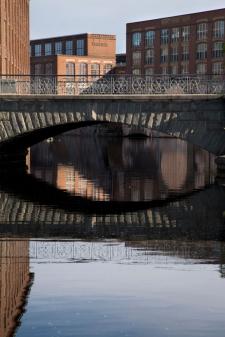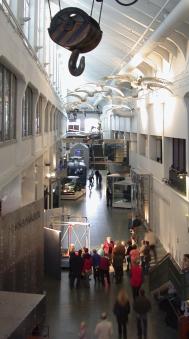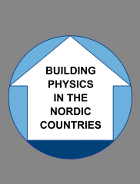Welcome reception
Welcome (c) The City of Tampere/ Jari Mäkinen Foraim
(c) The City of Tampere/ Jari Mäkinen Foraim (c) Vapriikki/Marika Tamminen Reception is organised at the restaurant of Museum Centre Vapriikki on Sunday May 29th at 18.00 - 20.00. Symposium fee includes Welcome Reception. Participation requires registration.
(c) Vapriikki/Marika Tamminen Reception is organised at the restaurant of Museum Centre Vapriikki on Sunday May 29th at 18.00 - 20.00. Symposium fee includes Welcome Reception. Participation requires registration.
Museum Centre Vapriikki is settled in a region which used to be the cradle for engineering works of Tampella Ltd. In addition to exhibition spaces, Vapriikki provides facilities for collections, preservation, photo archives, a reference library, an auditorium, education of school children as well as space for research and offices.
History
The industrial history of the Tampella area began in the 1840s with a small blast furnace. In 1856, Gustaf August Wasastjerna, the owner of the Seinäjoki iron works, founded a machine shop by the rapids, while Adolf Törngren, Master of Laws, founded a linen mill. Five years later the two merged to form the Tampere Linen and Iron Industry Limited Company (since named Tampella), which had a wide range of production including locomotives, turbines and damask cloths of linen. The textile production ended in the 1970s, and industrial use of the last buildings by the rapids ceased in the 1990s. The Swedish word ‘fabrik’ became the Finnish ‘vapriikki’ in the last century, and the museum centre was named Vapriikki to emphasise the significance of its location in Finnish industrial history.
The oldest parts of Vapriikki were built in the 1880s. The largest exhibition hall, a hundred metres long and sixteen metres high, dates back to the 1910s and 1920s. Factors influencing Vapriikki’s architectural design for museum use included its eventful industrial history and location in the heart of one of the country’s national scenic areas. The purpose of use, clearly different from the past, became the ch allenging basis for design, which aimed not at converting a factory into a museum or a museum focussing on industry only, but at creating a modern museum building respecting its heritage. The result preserves the basic character of the building, which reflects industrial history.
The construction stage proceeded step by step, while the first facilities opened for the public in 1996. All of the premises were finally completed in 2000.

